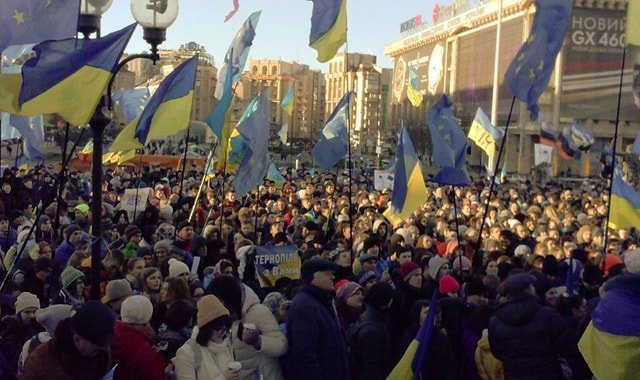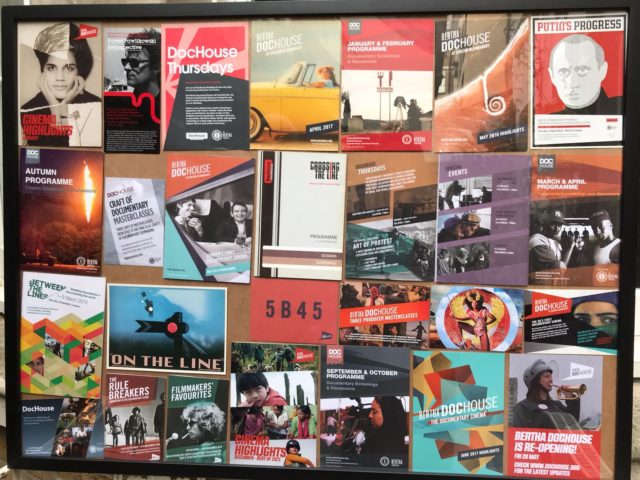To celebrate Marc Isaac's new release, and his True Story retrospective, we asked Marc to write about his filmmaking journey, sharing the stories from his earliest work up to The Filmmaker's House.
On Friday 25th June, we welcomed director Marc Isaacs to Bertha DocHouse for a Q&A to mark the release of his latest film, The Filmmaker’s House. Marc has a fascinating body of work, which is available to view online for the first time in a new retrospective – Marc Isaacs: Up Close – on the documentary platform True Story. To celebrate his new release, and his True Story retrospective, we asked Marc to write about his filmmaking journey, sharing the stories from his earliest work up to The Filmmaker’s House.
“Lift, Travellers and Calais – The Last Border” were my first three films and they were made between 2001 and 2003. Each film is set in a particular transient space. The individual settings are key to the human stories that unfold because they allow the time and space for reflection on what it means to be alive. I ‘cut my teeth’ making these three films and much of what I learned has remained with me to this day. I think that some of the characters in these works are amongst the most memorable in any of my films and I hope they resonate with you.
A few days ago I visited the homes of Susan and Norman – two of the many ‘protagonist’ in All White in Barking and Men of the City. It had been almost a decade since I last saw them. Back then we were in the early days of the fall out from the economic crisis of 2008 and in the middle of a certain kind of hysteria about immigration levels. Of course, the two things are connected and viewing the films together raises many questions that resonate strongly today.
With these films, I was certainly in the ‘eye of the storm’ with my camera but (as in all my work) I had both eyes firmly focussed on the universal/timeless themes inherent in the lives of the characters I encountered. Visiting Susan and Norman intensified my awareness of the power of film to freeze moments in time. I half expected them to be exactly as I had left them all those years ago. Alas, their lives have moved on just like mine and the world has changed in ways none of us could have predicted.
Watch the Q&A
The Filmmaker’s House: Q&ASomeday My Prince Will Come is set in an isolated former coal-mining village in Cumbria and Philip and His Seven Wives in a suburban house in West Sussex. These films are two of the very few I’ve made that feature single individuals as the main ‘protagonists’. I spent over 18 months immersed in the lives of Laura Anne and Philip, exploring the nature of love and power and the loss of innocence. My approach in Someday My Prince Will Come was to capture (and create) moments that expressed the trials and tribulations of childhood as it was nearing its end and, in Philip and His Seven Wives, to probe and question a man who believed he was a Hebrew king.
Laura Anne still lives on the same street and now has children of her own. Philip’s attempt to create a godly family ended in tragedy when he committed suicide last year. I attended his funeral and met all of his 18 children and was reacquainted with some of his former ‘wives’. When I think back to the lives of the children in Someday My Prince Will Come, I am reminded of the toughness of their existence but also their free-spirited innocence. This is something Philip and his wives were also searching for through religion. In both cases, the innocence and hope was in a constant struggle with the harsh reality of life.
I didn’t return to making short films after Lift (2001) for a long time as I was always fortunate enough to have funding for longer films. Despite this, short works have always interested me because you can really push the form in an innovative way. I have been inspired by the shorts of Krzysztof Kieślowski, Herz Frank, Zelimir Zilnik and many others.
With films like, The Old Man and His Bed, Outsiders and When Night Falls, I was trying to unify time and space by allowing the action to unfold in a single location, on a single ‘stage’. I set myself limitations which allowed me to distill the essence of the stories. Out of Time was my first attempt at an installation.
The four pieces exhibited were created at a time when I was struggling to conceive of my next feature project. There was something very reflective about working with material that had been filmed many years previously but never edited. Sometimes these moments of reflection and looking back are needed in order to move forward.
Outside The Court and The Road: A Story of Life and Death are two quite different films. In Outside The Court, I stand in one place and rely mainly on serendipity to determine the shape of the film, whilst in The Road, I actively seek out protagonists and mould their stories in the hope that the work becomes something more than the sum of its’ parts. In both films however, chance comes to the fore.
When Michel, the French man arrested for branding a knife, turned up at the court I knew an extraordinary character had come into my camera. His story is the backbone of the film. When both Peggy and Billy passed away during the shooting of The Road, all of my efforts to shape and control the narrative were suddenly rendered futile.
The Filmmaker’s House was born out of a desire to retain complete independence. As the traditional funders of these kind of films became more and more conservative and risk-averse, I decided to go it “alone”. Determined to risk something myself, I opened the doors to my home in order to explore our relationship to ‘strangers’ and interrogate notions of hospitality and generosity.
I invited people connected to my own life to become the film’s protagonists and set about improvising a structure that would offer a timely reflection on the act of filmmaking itself. I wanted to ‘wake’ myself (and my audience) up with an act of provocation designed to question notions of truth and performance.
Finding the balance between control and chance or planning and spontaneity is a constant challenge. Leave too much to chance and everything is in danger of unravelling. Exercise too much control and you will strangle the life out of the film.” Marc Isaacs
The ‘Marc Isaacs – Up Close’ retrospective is available to watch on True Story.


